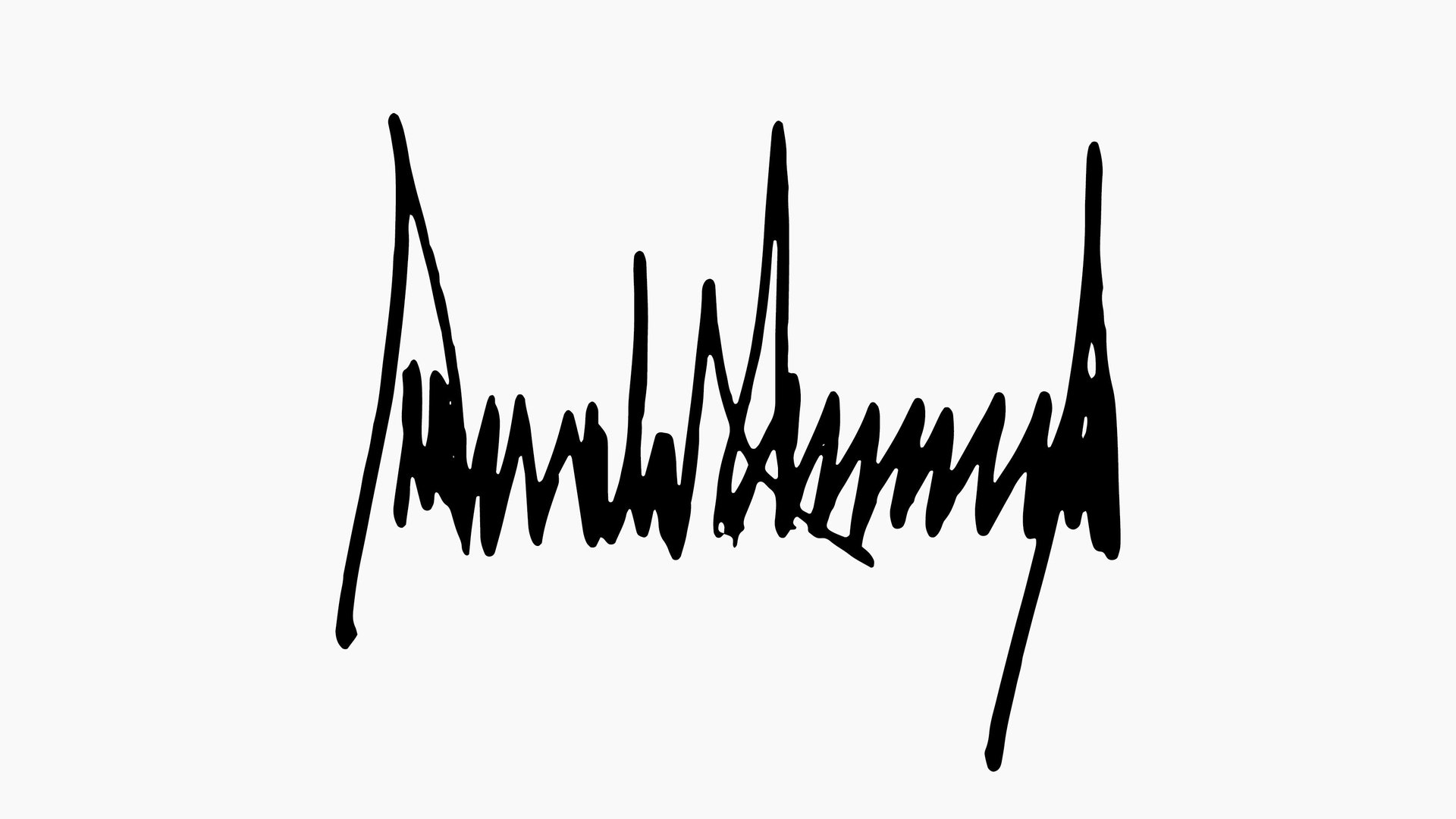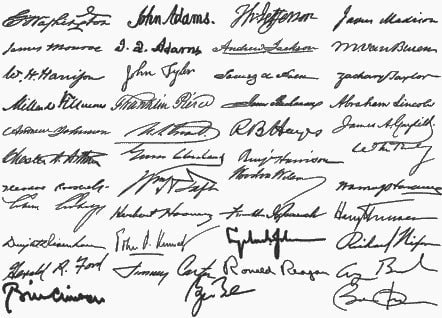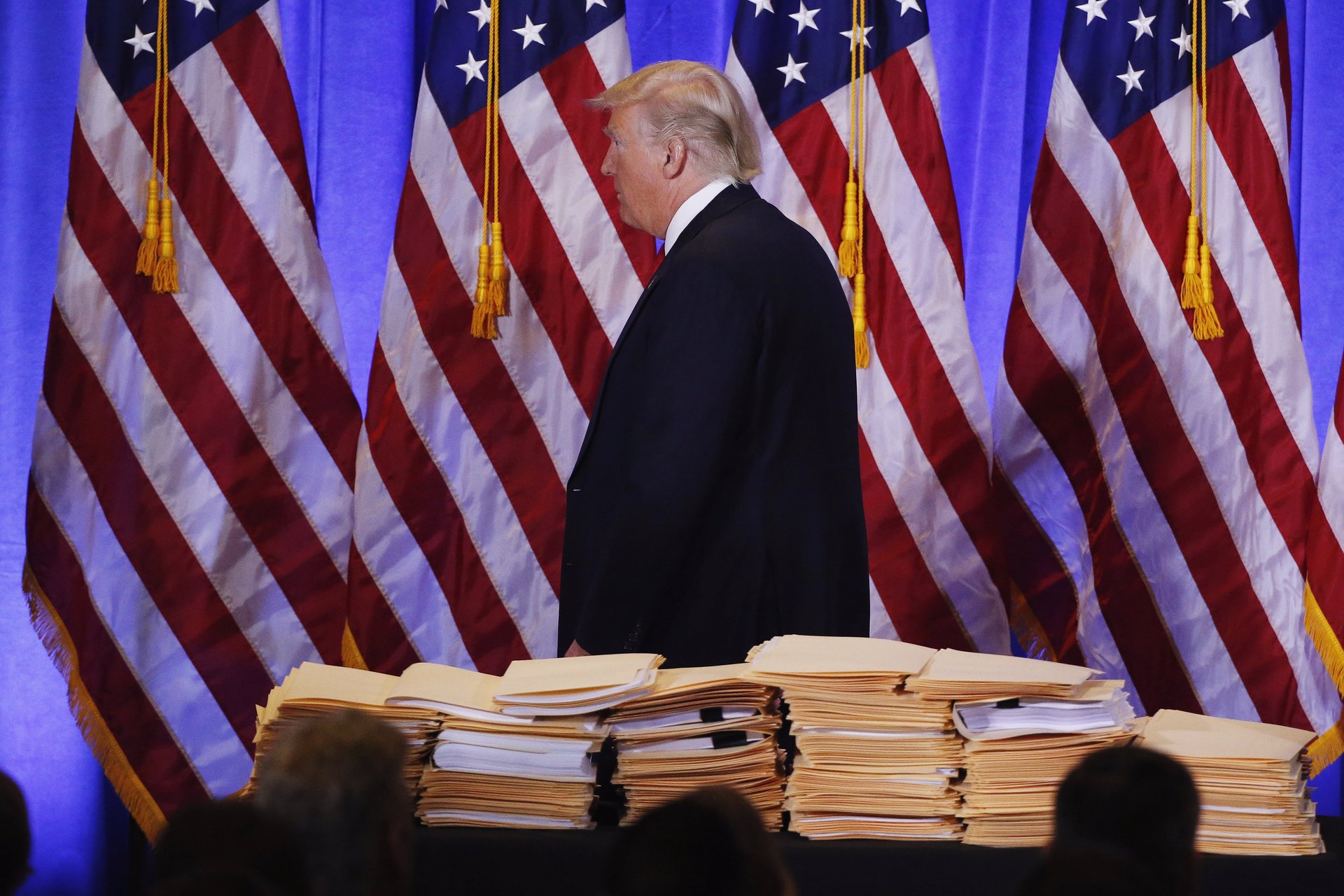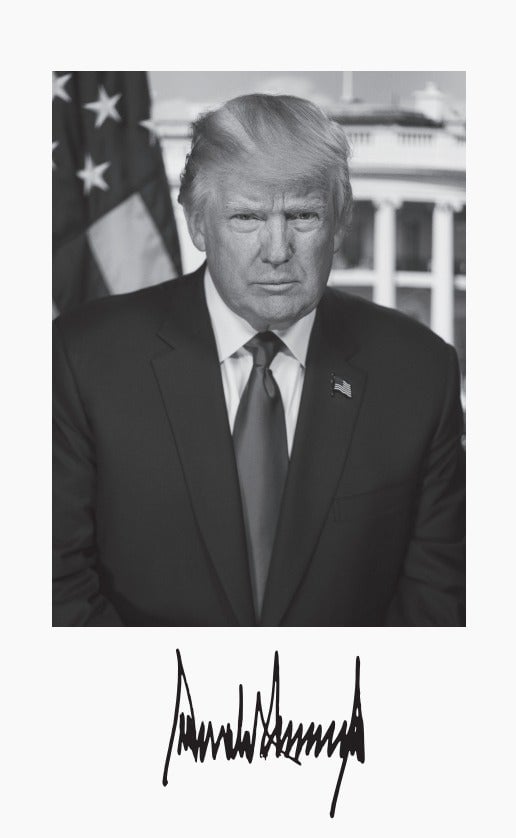Trump takes a ridiculously long time to sign his name
Per tradition, president Donald Trump signed his first executive orders shortly after being sworn in to office yesterday. Surrounded by his family and members of Congress, the world witnessed how long it takes Trump to write down the 11 letters in his first and last name.


Per tradition, president Donald Trump signed his first executive orders shortly after being sworn in to office yesterday. Surrounded by his family and members of Congress, the world witnessed how long it takes Trump to write down the 11 letters in his first and last name.
His official signature—a jagged, loop-less scrawl reminiscent of a seismometer reading from a catastrophic earthquake—took about six to seven seconds and over 30 strokes to complete. In comparison, his predecessors including left-handed Barack Obama took a second or two to scribble their executive marks.

Handwriting expert Marc J. Seifer, who observed the ceremonial signing, noted how deliberate Trump’s penmanship was. While many of us dash off with a quick scrawl on receipts and keypads, Trump took time to form each letter in his name. “It’s a long name and he writes every letter, although most of it is up and down angles. The image of his signature is important to him and so he takes a bit of time to get it right,” observed Seifer.
In cursive penmanship, efficient connecting loops make writing faster and allow space between letterforms to increase legibility. Of course, signatures don’t have to always be legible, or particularly pretty—unless you’re appointed Secretary of the US Treasury, when your scrawl will be immortalized in banknotes. For executives, book authors, celebrities, presidents, or anyone approving a lot paperwork, the key factor is speed. The efficiency of a drawn out signature comes into question as Trump will have to sign thousands of documents by hand—a point he belabored when he presented a table stacked with documents at his Jan. 11 press conference. Gesturing to the six piles of manila folders, Trump said, “these papers are just some of the many documents that I’ve signed turning over complete and total control to my sons.”

Signatures as tea leaves
A signature is a designed artifact about identity. One’s unique autograph can even be used as logo—the ultimate expression and validation of authorship. The logos for Disney, Oscar de la Renta and of course, John Hancock were all adapted from signatures, to name a few. Even in the age of e-signatures and biometric IDs, the handwritten scrawl is as telling as our social media profile pictures. Indeed, the second page of the fancy invitation to the inauguration ceremonies contained only two things: a quarter length photo of Trump scowling in front of the White House and his zig-zag signature below it.

Handwriting analysts or graphologists glean clues to one’s personality by looking at pen strokes. Seifer sees Trump’s strokes as a mirror of his leadership style. “I also noticed that the last letter ‘d’ is made by moving to the left instead of the right, which reflects his nature, which goes against the grain,” he notes. ”The use of all angles relates to his aggressive nature and tendency to see things black or white, one way or the other, with little room for compromise.”
Michelle Dresbold, who learned how to analyze documents from the US Secret Service, says one’s signature is a “brain print.” The teenage ritual of ”designing” our signature—testing out different swashes, strokes, and flourishes and committing them to muscle memory—is a form of self-exploration, she explains. “You put everything about yourself on the marks you put on a page.”